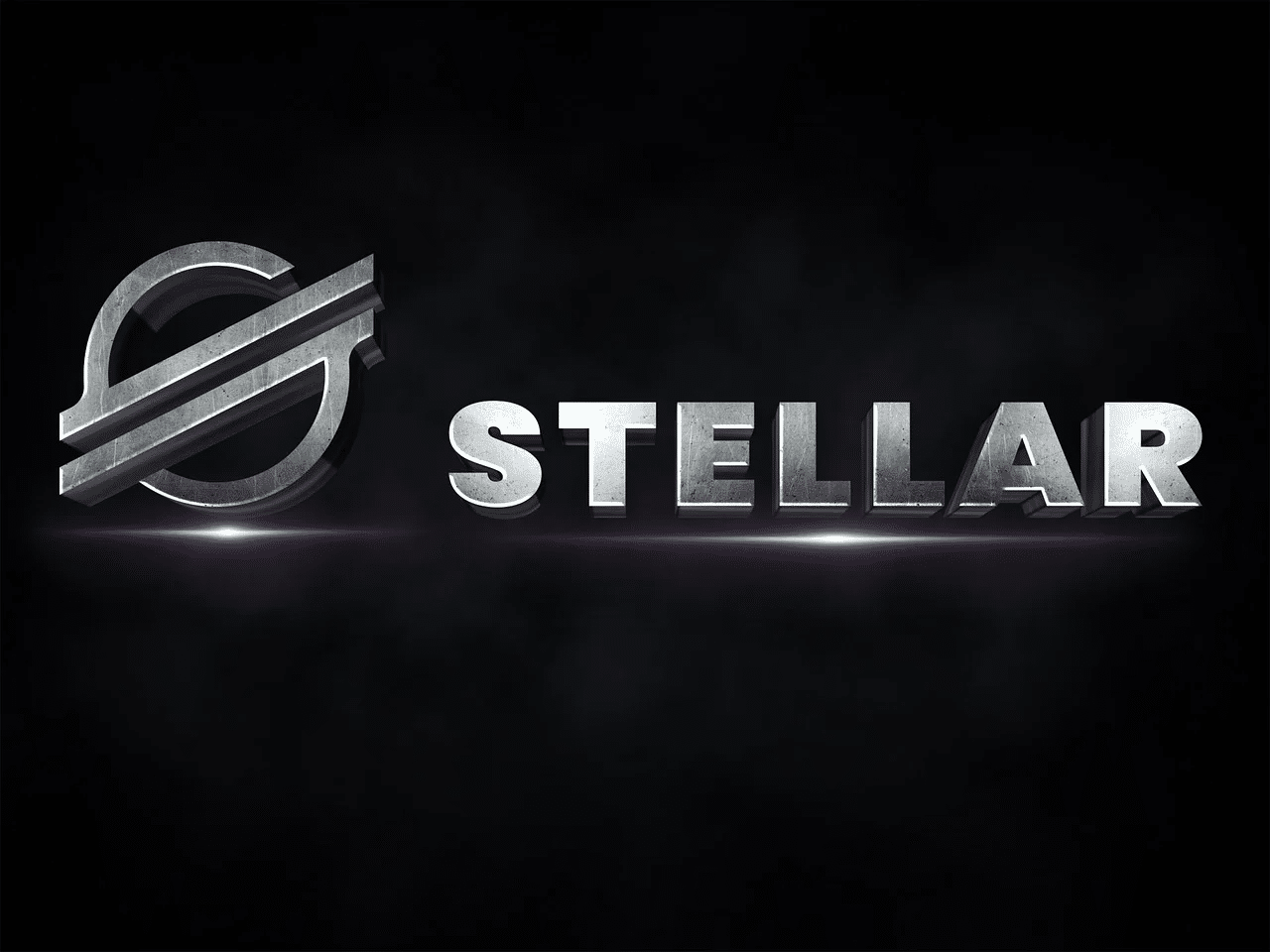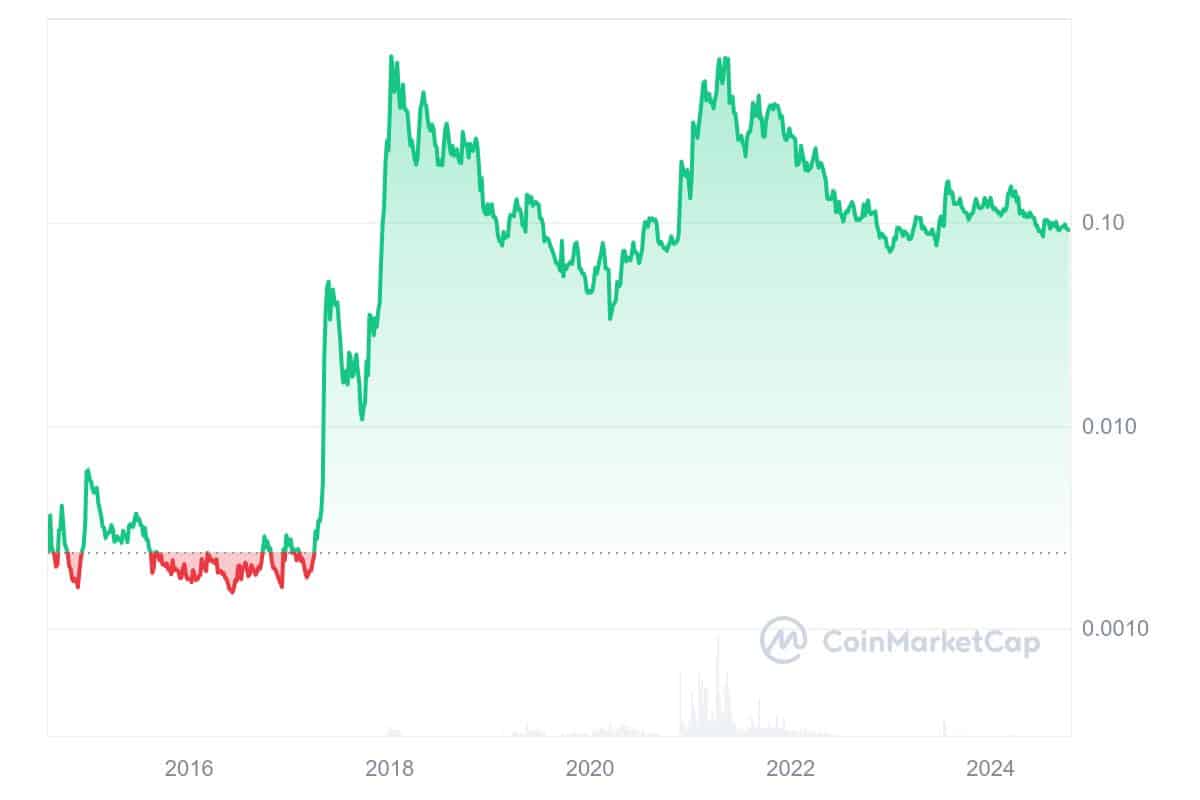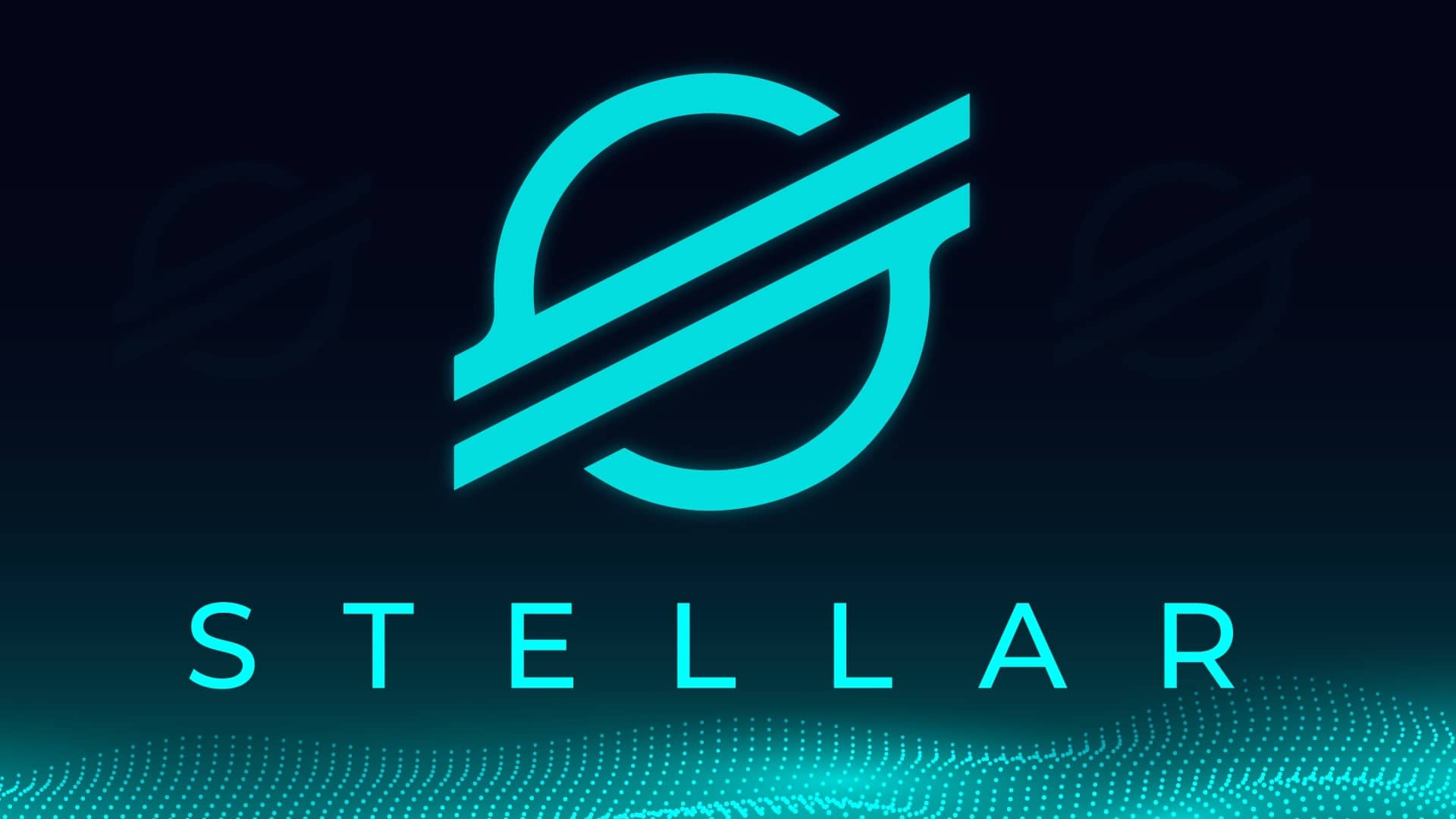About Stellar Lumens
[ccpw id=”432695″]Stellar Lumens was introduced as one of the more trustworthy altcoins in 2014. It is a decentralized peer-to-peer (P2P) network developed by the Stellar Development Foundation, also known as Stellar.org. The platform was officially launched in 2015 with a mission to bridge the gap between global financial systems and establish a seamless protocol for payment providers and financial institutions.
Stellar is engineered to enable fast and reliable transfers of financial resources at minimal cost. By connecting individuals, banks, and payment processors, the platform supports the creation, sending, and trading of various cryptocurrencies.
Stellar’s native currency, Lumens or XLM, plays a key role in transactions. XLM serves as both a bridge currency during exchanges and as the currency used to cover transaction fees. In just seconds, Stellar’s protocol converts one currency into XLM and then to the desired currency. The platform doubles as a decentralized exchange, featuring an integrated order book that tracks Stellar assets.
Users can manage buy and sell orders and customize their preferred assets for transactions. The project was among the then-leading cryptos and was speculated by many to be a revolutionary initiative, with a massive increase in value in the following years. But while it did pump massively over the years twice, the kind of change and impact the project aimed to make within the blockchain space wasn’t achieved by Stellar Lumens.
Because of this, once ranked within the top 10 cryptos in the industry by market cap, the XLM token currently sits at around 35th in the rankings. While investors speculated its market cap would be worth tens of billions of dollars, it sits at a relatively low valuation of around $3 billion, contrary to the image its team had built over the past years for its investors and community.
But while XLM prices are undeniably suffering, the Stellar team has impressively never stopped developing, no matter what the price charts show. This has led Stellar Lumens fans to have confidence in their chosen investment in a way that few other crypto projects can boast, and Stellar continues to radiate legitimacy even in a sea of schemes and scammers. The community remains strong even after a decade, hoping to see their favorite token rise in value and outgrow its competition, which realistically is miles ahead in terms of technology.
However, we believe that when the bulls return to the crypto markets, Stellar Lumens will be one of the projects that sees its prices soar back, perhaps even attempting to test or break its all-time high. So what is our Stellar Lumens value prediction for the future, and what will Stellar Lumens be worth in the years to come? To find out, just read on.
Why Stellar Lumens Prices Rise and Fall
In recent years, Stellar has proven resilient, consistently innovating and expanding, even during tough market conditions. The project has avoided significant developmental slowdowns, and its steady progress has been a key factor in maintaining investor confidence. However, technological issues have played a role in its price fluctuations. For example, in January 2024, Stellar’s highly anticipated Protocol 20 upgrade, which aimed to introduce smart contract functionality via the Soroban platform, was delayed due to a bug discovered just days before the launch. This led to a negative reaction from the community, causing a price dip. Fortunately, the Stellar Development Foundation (SDF) acted quickly, resolving the issue and rolling out the upgrade the following month.
Beyond technological advances, partnerships have been pivotal in driving Stellar’s growth and influencing its price. The MoneyGram partnership, which enabled USDC to be used on Stellar’s blockchain for cross-border settlements, was a major milestone. Other significant collaborations, such as the launch of a Peruvian stablecoin and the facilitation of USDC remittances between Europe and Africa, have increased demand for buying XLM as a utility token within the global financial system. In 2022, a Ukrainian bank even piloted the use of Stellar’s blockchain to launch an electronic version of its currency, the hryvnia. These partnerships underscore Stellar’s role in global remittance services, often leading to positive price movements.
However, despite the strong ecosystem and perseverance, Stellar has faced criticism due to occasional technical bugs and slower-than-expected feature rollouts. These factors, coupled with its reliance on partnerships to drive growth, mean that XLM’s price can be quite reactive to both positive and negative news. When new partnerships or features are announced, demand for XLM tends to rise. Conversely, any delays or technical problems, such as the recent bug, can lead to short-term price drops.
Nevertheless, the successful deployment of smart contracts on the Stellar network in February 2024 marked a crucial step forward for the project. This functionality enables the development of decentralized applications (dApps) on Stellar, opening new use cases and potentially driving further demand for XLM.
Best XLM Exchange in May 2025
[fin_table id=”14122″]Compare Crypto Platforms
[side_by_side_comparison id=”14046″ type=”Crypto”]Stellar Lumens Price History
Initially, for a few months since its launch XLM was worth almost nothing, overshadowed by more well-known cryptocurrencies like Bitcoin and Ethereum. Even though Stellar’s founder, Jed McCaleb, had come from Ripple and adapted its technology to create Stellar, it took several years for the project to break into the upper tiers of the crypto market. When it finally did, the price surge was substantial, marking Stellar’s first significant entry into the market spotlight.

Stellar’s first major pump occurred in May 2017, when its price began to rise steadily, reflecting growing interest in the project. However, the big breakthrough came in late November 2017, when XLM surpassed all previous highs, driven by overall bullish market sentiment and Stellar’s expanding partnerships. By early January 2018, Stellar Lumens hit a price of nearly $0.08 per token, with its market cap reaching over $13.5 billion, placing it among the top cryptocurrencies at the time.
This was Stellar’s first significant bull run, but like many cryptocurrencies, the gains were not sustainable. After hitting these highs in early 2018, XLM’s price began to tumble as the broader crypto market entered a prolonged bear phase. The token’s price dropped to around $0.07 by mid-2018, representing a 60% decline. This was still a better performance compared to many altcoins, which suffered even steeper declines during the same period. Stellar’s relatively smaller losses during the bear market spoke to the market’s faith in its long-term potential.
The next significant price surge for Stellar occurred during the crypto bull run of 2021. Like in 2018, XLM rode the wave of the overall market’s bullish sentiment, surging to new highs. By May 2021, Stellar reached a price of approximately $0.70, just shy of its all-time high from the 2018 run. This rise was fueled by major partnerships, including the MoneyGram collaboration for USDC settlements and the Ukrainian bank’s pilot for launching a digital currency on Stellar’s blockchain.
However, despite this surge, Stellar once again failed to break past previous resistance levels. After approaching $0.70, the token faced heavy selling pressure and quickly lost momentum, leading to another steep decline. By the end of 2021, XLM was trading closer to the $0.10-$0.15 range, where it has remained for much of the time since then.
Recent Developments and Current Price
In early 2024, Stellar saw some renewed activity, particularly with the successful launch of Protocol 20, which introduced Soroban smart contracts to the network. This development brought new functionality to Stellar, potentially increasing its utility for decentralized applications (dApps). Following the implementation of smart contracts, XLM showed signs of recovery, nearing $0.16 in early 2024.

Despite these positive developments, Stellar Lumens has yet to break its all-time high from 2018, and the token continues to face resistance at critical levels. Its performance has largely mirrored that of the broader crypto market, with price dumps following periods of resistance during both the 2018 and 2021 bull runs.
Looking forward, Stellar’s ability to push past these resistance levels will likely depend on continued innovation and adoption of its blockchain for cross-border payments, stablecoin integration, and smart contract functionality.
Stellar Lumens Future Price Predictions
Stellar Lumens XLM looks like one of the projects to stock up on during this ongoing bear market. For now, let’s get into the details of just how we think Stellar Lumems prices are going to change over the coming years.
Q4 2024
As we head towards Q4 2024, Stellar Lumens (XLM) remains in a relatively stable position, trading at approximately $0.092. With an RSI level hovering around 44, the token is not in an overbought or oversold territory, which suggests that unless a significant catalyst emerges, there won’t be a sudden price spike. The Bollinger Bands Width (BBW) shows low volatility, further indicating that no immediate explosive growth is likely without notable external drivers.
For XLM to replicate the price surges seen during past bull markets, significant news or developments are needed—whether in the form of new partnerships, network upgrades, or broader crypto market momentum. Currently, investor attention is largely diverted to other trending projects, and Stellar will have to work hard to regain market interest. However, steady and incremental growth is still possible, especially if the Stellar Development Foundation (SDF) remains active, continuously improving the network, and engaging with the community.
The success of the Soroban smart contract platform will also play a critical role in defining XLM’s performance. The introduction of decentralized applications (dApps) on Stellar can gradually drive more utility for XLM, increasing demand over time. While a massive pump similar to past bull runs is unlikely in Q4 2024 without these catalysts, moderate growth can still be anticipated if Stellar maintains its pace of development and community support.
2025
Looking at 2025, adoption will be the key determinant of Stellar Lumens’ future price action. The potential for large-scale adoption lies in Stellar’s ability to forge partnerships with major financial institutions and governments, similar to its past collaborations with MoneyGram and the Ukrainian government. These partnerships have previously fueled demand for XLM, and expanding them into new markets, particularly for remittances, stablecoins, and cross-border payments, will be crucial.
Either way, Stellar must find ways to stand out from its competition. With numerous blockchain networks targeting similar use cases, Stellar must not only continue delivering technological advancements but also prove to investors why it’s a better option than other projects in the same space, such as Ripple or Algorand. This will require more aggressive marketing efforts, improved scalability, and perhaps a shift in focus towards regions that have yet to embrace blockchain technology. By enhancing its presence in the DeFi ecosystem and leveraging its low transaction fees and fast settlement times, Stellar has the potential to break its current all-time high and move towards the $1 range in 2025.
Institutional support will also be a major game-changer. If Stellar manages to solidify its foothold as a leading platform for cross-border financial solutions, XLM could experience substantial growth. On the flip side, if Stellar fails to set itself apart, the token could remain stagnant, unable to break through crucial resistance levels. Success in 2025 will depend on Stellar’s ability to not only grow its user base but also build a thriving ecosystem that attracts developers, investors, and institutions.
2030 and Beyond
Stellar Lumens and its growth will largely depend on global adoption and the rate at which blockchain solutions become integrated into traditional financial systems, especially in the long term. If Stellar can maintain its position as a trusted network for cross-border payments, stablecoins, and remittances, XLM could see exponential growth. Adoption by global financial institutions and governments could drive immense demand for XLM, increasing its price substantially as more users and companies rely on Stellar’s blockchain for secure and fast transactions.
Another key factor will be how well Stellar competes with other blockchain networks that are also focusing on cross-border payments and DeFi solutions. Stellar must continue to evolve technologically, ensuring that its network remains fast, secure, and scalable. It is possible that the success of Soroban and the growth of the dApp ecosystem on Stellar will contribute significantly to its long-term value. If Stellar can attract a thriving developer community, creating valuable decentralized applications, this could fuel demand for XLM, further boosting its price.
That said, if adoption stalls and competition from other blockchains intensifies, it may become difficult for Stellar to maintain its relevance in the space. The rate of adoption will ultimately dictate XLM’s price in 2030 and beyond. If the Stellar network becomes widely used in daily transactions, financial services, and decentralized finance, its price could see significant appreciation. However, failure to capture a larger share of the market could lead to stagnation, with XLM struggling to move beyond its previous highs.
Essentially, the long-term potential for XLM is closely tied to adoption rates, innovation within the network, and its ability to outpace competitors. If these conditions align in Stellar’s favor, the token could see strong growth in the next decade.
Should I Buy Stellar Lumens Now?
Stellar Lumens has long been a stable and reliable option for investors seeking to participate in the blockchain space. With its efficient cross-border payment system and key partnerships with several financial institutions, Stellar has solidified its place in the ecosystem.
However, as the blockchain industry matures, more investors are also seeking projects with higher potential for rapid returns, especially those in their early stages. While Stellar offers steady, incremental growth, more speculative investments like Crypto All-Stars could offer greater upside, especially for those looking to diversify their portfolios.

Crypto All-Stars offers something entirely different. Stellar focuses on practical use cases, whereas Crypto All-Stars taps into the highly popular and often entertaining meme coin sector, offering unique staking opportunities for tokens like Dogecoin, Shiba Inu, and others. What sets Crypto All-Stars apart is its focus on staking, an area often underdeveloped in the meme coin space. Through its MemeVault, users can stake their favorite meme coins and earn rewards in the native STARS token, creating an ecosystem that encourages participation in a fun and rewarding way.
The STARS token itself holds considerable utility within the platform. Not only can it be earned through staking, but it also acts as a key driver of the platform’s growth. Investors who hold STARS can benefit from triple payouts, a feature that encourages users to stay engaged in the ecosystem for longer periods. In its presale phase, STARS is available at a discounted price, and with over $2.2 million already raised, early investors are showing confidence in the project.
Its focus on staking meme coins—a sector often driven by community engagement and viral trends—creates a dynamic environment where holders can earn passive income while participating in the meme culture. Popular YouTubers like Claybro have endorsed the presale too, calling STARS a 10x or 100x potential project in their videos.
By combining the meme coin craze with tangible financial incentives, Crypto All-Stars offers a unique approach to the market, one that complements the more established projects like Stellar. This dual focus on community-driven engagement and high staking rewards ensures that Crypto All-Stars appeals to both small-scale investors and those looking for higher returns in a relatively short period.
For those already invested in Stellar Lumens, expanding into projects like Crypto All-Stars could offer a more balanced portfolio. Stellar remains a strong long-term play, with a focus on institutional use cases and cross-border transactions, but early-stage projects like Crypto All-Stars provide the kind of upside potential that Stellar may not offer in the near term. With its presale ongoing, now might be a good opportunity to enter the market before the platform launches fully, and potentially see significant returns from staking and community engagement.



